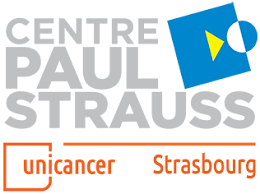Predictive geriatric factors in elderly patients treated for idh-mutant high-grade gliomas: a French Pola network study
Résumé
We aimed to describe the characteristics, patterns of care and predictive geriatric factors of elderly patients with IDH-mutant (IDHm) high-grade gliomas (HGG) included in the French POLA network, dedicated to HGG (including 68% of IDHm HGG). For IDHm HGG patients over the age of 70 years, geriatric features were collected: G8 score items (appetite, weight loss, mobility, neuropsychological disorders, body mass index, medications, self-rated health, age), Activities and Instrumental Activities of Daily Living (ADL, IADL) scores, Charlson’s comorbidity Index (CCI) and biological markers. Out of the 1433 HGG patients included in the POLA Network, 119 (8.3%) occurred in patients ≥ 70 years. Among them, 39 presented with IDHm HGG. Of these 39 patients, estimated G8 score was ≤ 14/17 for 16 patients (64%), ADL score was < 6 for 33.3%, IADL score was < 4 for 47% and CCI was ≥ 5 for 72%. Regarding treatment feasibility, 6 of the 19 patients treated by temozolomide prematurely discontinued chemotherapy including 2 for toxicity and 4 for progression. Five of the 10 patients treated by PCV prematurely discontinued chemotherapy, all for toxicity. In multivariate analysis, loss of mobility (p=0.018; p=0.008), severe neuropsychological disorders (p=0.005; p=0.047), body mass index < 21 kg/m2 (p=0.002; p=0.006) and ADL score < 6 (p=0.002; p=0.01) were significantly predictive of poor PFS and OS. Then we generated a specific brain geriatric score including these four items with a sensibility, specificity and AUC for long term survivor (≥ 48 months) of 100%, 83% and 0.948 respectively. Using a cutoff of < 10/13, this score was significantly correlated to PFS and OS (p< 0.001 both). In conclusion, geriatric predictive factors may contribute to the elderly management improvement: the brain geriatric score must now be validated in a prospective independent cohort including IDHm and IDHwt elderly patients.
Domaines
Sciences du Vivant [q-bio]| Origine | Fichiers produits par l'(les) auteur(s) |
|---|
